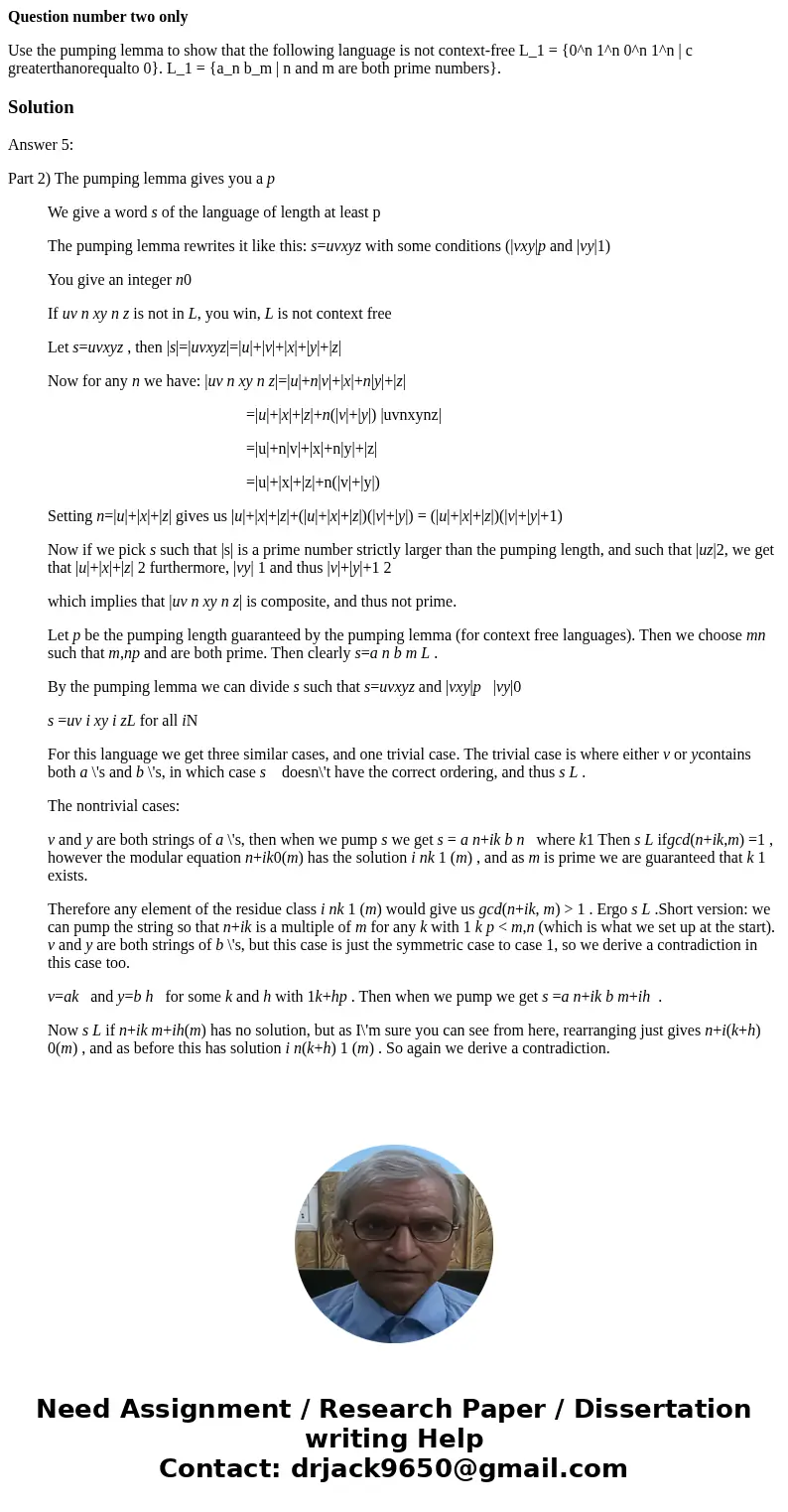Question number two only Use the pumping lemma to show that
Question number two only
Use the pumping lemma to show that the following language is not context-free L_1 = {0^n 1^n 0^n 1^n | c greaterthanorequalto 0}. L_1 = {a_n b_m | n and m are both prime numbers}.Solution
Answer 5:
Part 2) The pumping lemma gives you a p
We give a word s of the language of length at least p
The pumping lemma rewrites it like this: s=uvxyz with some conditions (|vxy|p and |vy|1)
You give an integer n0
If uv n xy n z is not in L, you win, L is not context free
Let s=uvxyz , then |s|=|uvxyz|=|u|+|v|+|x|+|y|+|z|
Now for any n we have: |uv n xy n z|=|u|+n|v|+|x|+n|y|+|z|
=|u|+|x|+|z|+n(|v|+|y|) |uvnxynz|
=|u|+n|v|+|x|+n|y|+|z|
=|u|+|x|+|z|+n(|v|+|y|)
Setting n=|u|+|x|+|z| gives us |u|+|x|+|z|+(|u|+|x|+|z|)(|v|+|y|) = (|u|+|x|+|z|)(|v|+|y|+1)
Now if we pick s such that |s| is a prime number strictly larger than the pumping length, and such that |uz|2, we get that |u|+|x|+|z| 2 furthermore, |vy| 1 and thus |v|+|y|+1 2
which implies that |uv n xy n z| is composite, and thus not prime.
Let p be the pumping length guaranteed by the pumping lemma (for context free languages). Then we choose mn such that m,np and are both prime. Then clearly s=a n b m L .
By the pumping lemma we can divide s such that s=uvxyz and |vxy|p |vy|0
s =uv i xy i zL for all iN
For this language we get three similar cases, and one trivial case. The trivial case is where either v or ycontains both a \'s and b \'s, in which case s doesn\'t have the correct ordering, and thus s L .
The nontrivial cases:
v and y are both strings of a \'s, then when we pump s we get s = a n+ik b n where k1 Then s L ifgcd(n+ik,m) =1 , however the modular equation n+ik0(m) has the solution i nk 1 (m) , and as m is prime we are guaranteed that k 1 exists.
Therefore any element of the residue class i nk 1 (m) would give us gcd(n+ik, m) > 1 . Ergo s L .Short version: we can pump the string so that n+ik is a multiple of m for any k with 1 k p < m,n (which is what we set up at the start). v and y are both strings of b \'s, but this case is just the symmetric case to case 1, so we derive a contradiction in this case too.
v=ak and y=b h for some k and h with 1k+hp . Then when we pump we get s =a n+ik b m+ih .
Now s L if n+ik m+ih(m) has no solution, but as I\'m sure you can see from here, rearranging just gives n+i(k+h) 0(m) , and as before this has solution i n(k+h) 1 (m) . So again we derive a contradiction.

 Homework Sourse
Homework Sourse